mobile View, to the German Version tap the flag


- New Caledonia and Dependences
- possession of France
- Overseas community, autonomous and not part of France
- own name: Collectivité sui generis de la Nouvelle-Calédonie et Dépendances
• Flag
• unofficial Flags
• Meaning/Origin of the Flag
• Coat of Arms
• Meaning/Origin of the Coat of Arms
• Map
• Numbers and Facts
• History
• Origin of the Country's Name
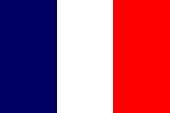
Flag of France,
ratio = 2:3,
Source, by: Corel Draw 4






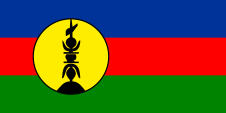
since 1984,
Proposal of 2010 for an unofficial flag (FLNKS Party),
Source, by:
Wikipedia (D)





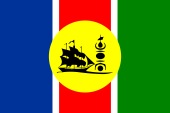
2010,
Proposal for an unofficial flag (Calédonie Ensemble Party),
Source, by:
FOTW



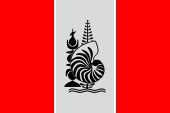
2010,
Proposal for an unofficial flag,
Source, by: FOTW



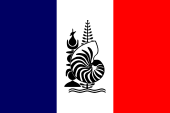
Proposal for an unofficial flag,
Source, by: Entendre (Vortrag), CC BY 1.0,
via Wikimedia Commons



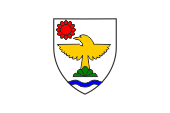
Flag of the Caldoches,
Source, by: FOTW



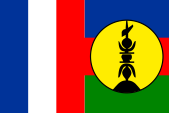
unofficial flag at FIFA,
Source, by: Wikipedia (EN),
WarX,
Public domain, via Wikimedia Commons



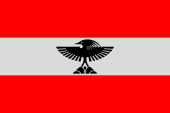
unofficial flag for international sporting events,
Source, by:
FOTW



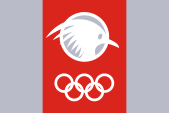
2007,
unofficial flag for the Pacific Games,
Source, by:
Wikipedia (FR),
vectorized and added by Jürgen Krause
The original uploader was Dn9ahx at English Wikipedia.,
CC BY-SA 3.0, via Wikimedia Commons



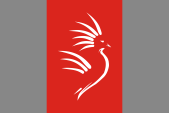
2019,
unofficial flag for the Pacific Games,
Source, by:
Wikipedia (FR),
Xfigpower,
CC BY-SA 3.0, via Wikimedia Commons




All French colonies had no own flag over a long period. It had to be hoisted the French tricolor. This in principle usual until today. The territorial entity has therefore officially to use the flag of France. In a few cases, a local and unofficial flag may be hoisted next to the ticolor. The regional parliament (Congress) of New Caledonia, however, adopet no own flag in 2010, but proposed the since 1984 existing party flag of the FLNKS as unofficial flag. A request has been made to hoist it next to the French flag. This proposal has not yet been approved. The background is that the FLNKS as a party is assigned to an extreme political spectrum and only represents a minority and does not stand for all New Caledonians, be they Melanesians or Europeans. It is therefore not a symbol for unity. Because the quest for independence from France finds no majority in the population of the country, it is obvious that the flag of the FLNKS is not used anywhere in the country. A flag dispute has broken out over the design of a flag as the symbol of unity, which has led to political crises. Since 2010 at least, there have been repeated proposals for this. One of these came from the rival Calédonie Ensemble Party. Likewise, at least one arrangement involving the national emblem and the French tricolour. Other proposals took up combinations in red-grey-red, which are considered national colours. They go back to a bird species called Kagu (Rhynochetos jubatus), which lives here and is considered a national symbol. It has a red beak, grey plumage and red feet. These colours are already used at international sporting events, and often even the bird itself can be seen on the flags. The flag of the FLNKS shows three horizontal stripes in blue, red and green, and shifted towards the flagpole, a large golden disc with a traditional spear. Blue represents the tribes on the coast, green the tribes in the mountains, and the red is the alliance that connects the two, but also the blood of the ancestors, and is symbolic of the struggle. The yellow disc symbolises the sun and life. The traditional spear - full of symbolism - often fixed on native roofs, commemorates the ancestors and stands for the sovereignty of the native islanders, the Kanaks. The French inhabitants of New Caledonia, more than a third of the total population - they are called "Caldoches" or "Calédoniens" - have their own flag. It is plain white and features a golden kagu, a stylised red sun, in a white escutcheon placed in the centre, as well as symbolism representing the land and the sea.
Source:
Wikipedia (D),
Wikipedia (FR),
Wikipedia (EN),
FOTW,
Wikipedia (EN)


Emblem of New Caledonia,
Source, by:
Wikipedia (D),
J.delanoy,
CC BY 1.0, via Wikimedia Commons

The black and white emblem of New Caledonia is a stylized collection of regionally important symbols, the shell of a nautilus, a pine (Araucaria columnaris, also called Cook pine), and the spear, which also appears on the flag of the FLNKS Party, and decorates traditionally the gables of the houses.
Source:
Wikipedia (D)

Location:
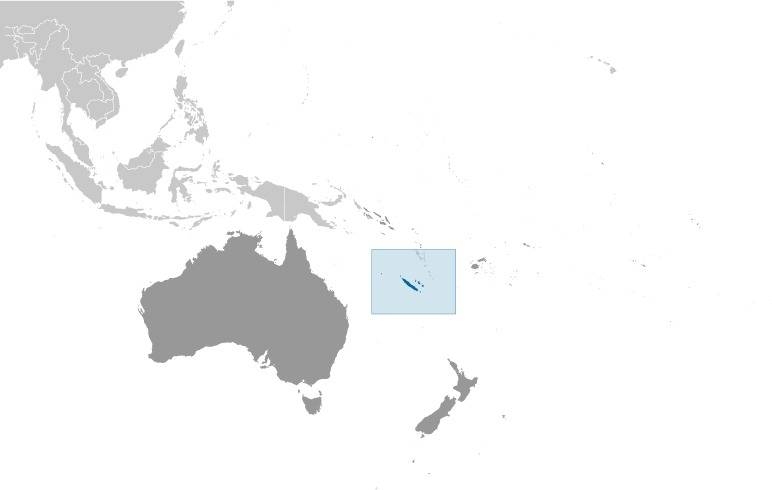
Source: CIA World Factbook
Map of the country:
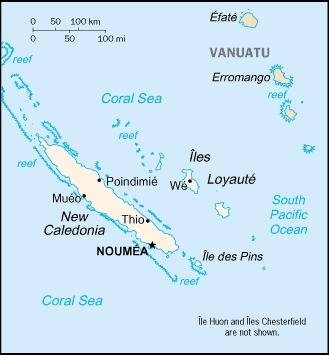
Source: CIA World Factbook

Area: 7.150 square miles
thereof: New Caledonia Island 6 321 sq.mi.
Dependencies: Loyauté Is. 800 sq.mi. (18 300 inh.), Pine Island 52 sq.mi. (1 960 inh.), Bélep Islands 27 sq.mi. (840 inh.), Chesterfield Islands (uninhabited), Huon Islands (uninhabited), Walpole Island (uninhabited), Matthew Island (uninhabited), Hunter Island (uninhabited)
Inhabitants: 280.460 (2017), thereof: 44% Melanesians (Kanaky), 34% Europeans (Caldoches), 12% Polynesians, 1% Vietnamese
Religions: 60% Roman Catholic, 30% Protestant
Density of Population: 39 inh./sq.mi.
Capital: Nouméa (formerly Port-de-France), 94.285 inh. (2019)
official Language: French
other Languages: Melanesian and Polynesian dialects
Currency: CFP-Franc (CFPF) = 100 Centimes,
CFPF = "Franc des Colonies Françaises du Pacifique"
Time Zone: GMT + 11 h
Source:
Wikipedia (D)

1774 · discovered by James Cook
1853 · French colony
1863–1894 · penal colony
1946 · Overseas Territory
1984 · the independence movement growes stronger, the "Kanaky Liberation Front" provokes agitations
1984 · ceding of limited autonomy
1st of December in 1984 · declaration of a "Republic of Kanaky"
1987 · referendum for independence, only 35 % for that doing
1988 · Nouméa Accord, France cedes limited self-administration, referendum for independence, 56,4 % vote against
2003 · Constitutional amendment, the archipelago becomes an "overseas community with special status" (collectivité sui generis) belonging to France
2020 · referendum for independence, 53,3 % vote against
2021 · referendum for independence, 96,5 % vote against
Source:
Atlas zur Geschichte,
Wikipedia (D)

When James Cook discovered the islands on 4th of September in 1774, he gave them their name. "New Caledonia" can be translated as "Nova Scotia".
Source:
Wikipedia (D)


![]()


















